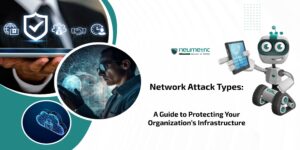Table of Contents
ToggleIntroduction:
Client security audits are crucial for businesses in today’s digital world to ensure the protection of sensitive information & maintain the trust of their clients. A client security audit is a comprehensive evaluation of an organization’s security measures, policies & practices to identify vulnerabilities & assess compliance with industry regulations & client requirements.
The importance of client security audits cannot be overstated. They help businesses identify potential risks & weaknesses in their security infrastructure, enabling them to take proactive measures to mitigate threats. Furthermore, client security audits provide an assurance mechanism to clients, demonstrating that the organization takes data protection seriously & is committed to safeguarding their information.
This Journal will focus on providing best practices & tips for businesses to master client security audits. It aims to equip organizations with the necessary knowledge & strategies to effectively prepare for, conduct & respond to client security audits. It will also cover a wide range of topics, including risk assessment & management, compliance with industry standards & regulations, secure data handling & storage, incident response planning, employee training & awareness & vendor management.
Understanding Client Security Audits:
Client security audits are comprehensive assessments conducted by organizations to evaluate the effectiveness & robustness of their security measures. These audits aim to identify vulnerabilities, assess compliance with industry standards & regulations & ensure the protection of client data.
Key stakeholders involved in client security audits include:
Clients: The organizations or individuals whose data is being protected. Clients often initiate security audits to ensure that their sensitive information is handled securely by the service provider.
Service Providers: The organizations that are subject to the security audit. These can include technology companies, financial institutions, healthcare providers & other businesses that handle sensitive client data.
Auditors: Independent third-party entities or internal audit teams responsible for conducting the security audit. Auditors assess the security controls, policies & practices of the service provider & provide recommendations for improvement.
Successful client security audits offer several benefits to organizations:
Client trust: A successful audit demonstrates to clients that their data is handled with care & that the service provider takes security seriously. This enhances trust & strengthens the client-provider relationship.
Compliance: Audits ensure compliance with industry regulations, such as the General Data Protection Regulation [GDPR], Payment Card Industry Data Security Standard [PCI DSS] or Health Insurance Portability & Accountability Act [HIPAA]. Compliance minimises the risk of legal consequences & reputational damage.
Risk mitigation: By identifying vulnerabilities & weaknesses, security audits enable organizations to take proactive measures to mitigate potential risks. This helps in preventing security breaches, data leaks & other cyber threats.
Competitive advantage: Successful audits can serve as a competitive differentiator, as they demonstrate an organization’s commitment to security. It can attract new clients who prioritize data protection & give an edge over competitors.
Preparing for Client Security Audits:
Identifying applicable regulatory requirements & industry standards: Start by identifying the specific regulatory requirements & industry standards that are applicable to your business. This may include standards such as ISO 27001, NIST Cybersecurity Framework or sector-specific regulations like HIPAA or GDPR. Understand the requirements imposed by these regulations & standards to ensure compliance during the audit.
Assessing existing security measures & identifying gaps: Conduct a thorough assessment of your organization’s existing security measures to identify any gaps or vulnerabilities. This assessment should cover areas such as network security, data protection, access controls, incident response & employee training. Engage internal stakeholders, such as IT, security & compliance teams to perform a comprehensive evaluation.
Establishing internal policies & procedures for security compliance: Develop & document internal policies & procedures that align with the regulatory requirements & industry standards. These policies should cover areas such as data classification, data handling & retention, incident response, access controls & employee responsibilities.
Key Areas in Client Security Audits:
Data protection & privacy are critical components of client security audits. Auditors assess how organizations handle & protect client data to ensure compliance with relevant regulations & industry standards. Key aspects of data protection & privacy include:
- Data classification & handling: Organizations should have a clear understanding of the sensitivity of client data & implement appropriate data classification measures. They should have policies & procedures in place to ensure that data is handled, stored, transmitted & disposed of securely.
- Encryption & anonymization: Auditors assess whether organizations employ encryption techniques to protect sensitive data, both in transit & at rest. Additionally, they evaluate the organization’s practices for anonymizing data when necessary to ensure privacy.
Network & infrastructure security: Auditors scrutinize the organization’s network & infrastructure security to assess its resilience against potential cyber threats. Key areas of focus include:
- Firewalls & network segmentation: Auditors evaluate the effectiveness of firewalls & network segmentation techniques to protect internal networks from unauthorized access. They assess whether access controls are properly implemented to prevent unauthorized network connections.
- Intrusion Detection & Prevention Systems [IDPS]: Auditors examine the organization’s intrusion detection & prevention systems to identify any suspicious or malicious activities. They verify that systems are in place to monitor network traffic, detect potential security breaches & take appropriate action to prevent or mitigate them.
Access controls & authentication mechanisms play a crucial role in protecting client data. Key aspects of access controls & authentication include:
- User Account Management: Auditors assess how user accounts are created, modified & deactivated, ensuring that only authorized individuals have appropriate access privileges. They review account provisioning & deprovisioning processes, password policies & regular access reviews.
- Authentication Methods: Organizations should employ strong authentication methods, such as Multi-Factor Authentication [MFA], to ensure that user identities are verified before granting access. Auditors evaluate the effectiveness of authentication mechanisms & assess whether they align with industry best practices.
Incident Response & Disaster Recovery: Organizations must have robust incident response & disaster recovery plans to address security incidents effectively. Key aspects of incident response and disaster recovery include:
- Incident detection & response: Auditors assess the organization’s incident detection capabilities, including the use of monitoring tools, log analysis & threat intelligence. They also review incident response plans to ensure that they are comprehensive, regularly tested & cover incident containment, investigation & communication procedures.
- Disaster recovery planning: Auditors verify the organization’s disaster recovery plans & evaluate their effectiveness in restoring systems & data in the event of a disruptive incident. They assess backup & recovery procedures, offsite storage & testing frequency.
Employee awareness & training programs play a crucial role in maintaining a secure environment. Key aspects of employee awareness & training include:
- Security Awareness Training: Auditors review the organization’s security awareness training programs to ensure that employees are educated about security threats, best practices & their responsibilities in protecting client data. They assess the frequency, content & effectiveness of these training programs.
- Phishing Simulations: Organizations often conduct phishing simulations to assess employees’ susceptibility to phishing attacks & raise awareness about email security. Auditors evaluate the organization’s phishing simulation programs & the subsequent measures taken to educate employees based on the results.
Best Practices for Client Security Audits:
Conducting regular internal security assessments: Regularly assess & evaluate your organization’s security measures through internal audits. This helps identify vulnerabilities & gaps before the client security audit & allows you to address them proactively.
Implementing a comprehensive security framework: Establish a robust security framework, such as ISO 27001 or NIST Cybersecurity Framework, that aligns with industry standards. This framework provides a structured approach to security & helps ensure comprehensive coverage of security controls.
Documenting & maintaining security policies & procedures: Document & regularly update security policies & procedures to reflect changes in technology, regulations & business requirements. This provides clear guidelines for employees & demonstrates a commitment to security compliance.
Establishing strong incident response & recovery plans: Develop & regularly test incident response & disaster recovery plans. These plans outline the steps to be taken in the event of a security incident, enabling swift & effective response to minimize potential damage.
Tips for Successful Client Security Audits:
Effective communication & collaboration with auditors: Establish open & transparent communication with auditors throughout the audit process. Respond promptly to their inquiries, provide necessary documentation & address any concerns or issues raised during the audit. Collaboration fosters a constructive environment & helps ensure a smooth audit experience.
Thorough documentation & evidence collection: Maintain comprehensive documentation of security controls, policies & procedures. Collect & organize evidence that demonstrates compliance with regulatory requirements & industry standards. Well-documented & easily accessible evidence helps auditors verify the effectiveness of implemented security measures.
Conducting pre-audit self-assessments: Conduct internal self-assessments before the actual audit to identify any gaps or areas that require improvement. This allows organizations to address issues proactively, ensuring readiness for the audit. Self-assessments provide an opportunity to align practices with audit requirements & make any necessary adjustments.
Common Challenges & How to Overcome Them:
Resource constraints & limited budget: Resource limitations & budget constraints can make it challenging to implement robust security measures. To overcome this, prioritize security initiatives based on risk assessment, focusing on high-impact & cost-effective controls.
Complexity of compliance requirements: Compliance requirements can be complex & ever-changing. To navigate this challenge, stay updated on relevant regulations & industry standards. Utilize frameworks & guidelines provided by regulatory bodies & industry associations.
Balancing security with business operations: Striking a balance between security & business operations is crucial. Involve key stakeholders from different departments to align security measures with business goals. Implement risk-based decision-making processes that consider the potential impact on business operations.
Importance of Continuous Security Compliance:
Continuous Security Assessments & Audits provide several benefits. They help organizations identify & address vulnerabilities, gaps & emerging threats in a timely manner. Ongoing assessments ensure that security controls are effective & up-to-date, reducing the risk of security incidents & data breaches. Regular audits also demonstrate a commitment to maintaining a strong security posture, which can enhance trust & confidence among clients & stakeholders.
Continuous security compliance is vital for maintaining trust & credibility with clients. Clients expect their sensitive information to be protected & regular security assessments & audits provide assurance that organizations are taking the necessary measures to safeguard their data. By demonstrating ongoing compliance, organizations can strengthen client relationships, differentiate themselves from competitors & attract new clients who prioritize security.
The security landscape is constantly evolving, with new threats & vulnerabilities emerging regularly. Continuous security compliance allows organizations to adapt to these changes & mitigate emerging risks effectively. It enables organizations to stay informed about the latest security best practices, regulatory updates & industry standards. By continuously evaluating & updating security controls, organizations can proactively address new threats & ensure compliance with evolving regulations.
Conclusion
Mastering client security audits requires a proactive approach & a commitment to continuous security compliance. By following best practices such as conducting regular internal security assessments, implementing a comprehensive security framework & establishing strong incident response & recovery plans, organizations can enhance their readiness for client security audits.
Effective communication & collaboration with auditors, thorough documentation & evidence collection & continuous monitoring & updating of security controls are also crucial for successful audits. It is important to view audits as opportunities for improvement & learning, incorporating feedback & recommendations into security practices.
Continuous security compliance offers numerous benefits, including ongoing risk mitigation, maintaining trust & credibility with clients & adapting to the changing security landscape. By prioritizing security, organizations can meet client expectations, protect sensitive data & differentiate themselves in the market.
Building a strong security posture requires a combination of proactive measures, ongoing assessments & a commitment to continuous improvement. Organizations that prioritize security & embrace a culture of continuous compliance will be well-equipped to address client security audit requirements & maintain a resilient & secure environment for their clients.
FAQs:
What is the best way to implement a security audit?
The best way to implement a security audit is to start by identifying the scope & objectives of the audit, followed by conducting a comprehensive assessment of the organization’s security controls, policies & procedures & finally engaging experienced auditors to evaluate & provide recommendations for improvement.
What are auditing best practices?
Auditing best practices include maintaining documentation, evidence collection, regular communication & collaboration with auditors, conducting self-assessments & addressing identified vulnerabilities promptly.
How will a cybersecurity audit be helpful for your business?
A cybersecurity audit helps businesses assess the effectiveness of their security measures, identify vulnerabilities & gaps in their systems & ensure compliance with industry standards & regulatory requirements, ultimately enhancing the overall security posture of the organization.
What is the main purpose of a security audit?
The main purpose of a security audit is to evaluate the adequacy & effectiveness of an organisation’s security controls, policies & procedures, identify areas of vulnerability or non-compliance & provide recommendations for improvement to protect sensitive data, mitigate risks & enhance overall security.





